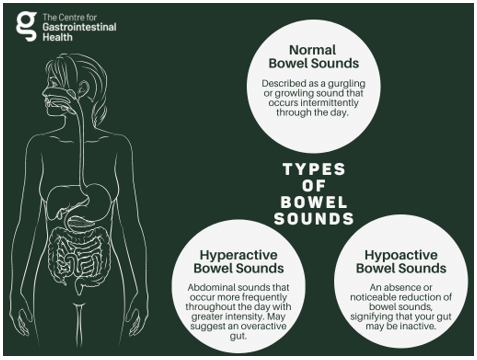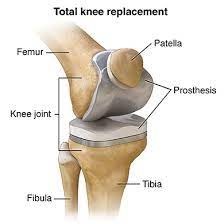A nurse is reinforcing teaching to a newly licensed nurse about bowel sounds.
Which of the following characteristics should the nurse use to describe hyperactive bowel sounds?
Sounds are high-pitched
Can be a result of a paralytic ileus
Indicates decreased motility
Sounds are soft and at a rate of 1/min
The Correct Answer is A
a. Sounds are high-pitched.
Hyperactive bowel sounds are bowel sounds that are louder and more frequent than normal. They may be heard as high-pitched rushing or tinkling sounds that occur irregularly at a rate greater than 5-6 sounds per minute. They are often associated with increased intestinal motility, such as in diarrhea, gastroenteritis, or early bowel obstruction.
Option b is incorrect because hyperactive bowel sounds are not typically associated with a paralytic ileus, which is a condition where the bowel stops working and there is a lack of bowel sounds.
Option c is incorrect because hyperactive bowel sounds indicate increased motility, not decreased motility.
Option d is incorrect because soft bowel sounds at a rate of 1/min are considered hypoactive bowel sounds, which can be a sign of decreased intestinal motility, as seen in constipation or postoperative ileus.

Nursing Test Bank
Naxlex Comprehensive Predictor Exams
Related Questions
Correct Answer is C
Explanation
A nurse assisting with the care of a client who is 6 hours postoperative following a right total knee arthroplasty should check the client's pedal pulses every hour. This is important to assess the adequacy of blood flow and tissue perfusion to the extremity.
It is also important to monitor the client's pain level, administer pain medication as ordered, and encourage the client to perform exercises as appropriate.
The head of the client's bed should be maintained in a semi-Fowler's position to promote optimal respiratory function, and the client's dressing should be changed only as needed and with sterile technique.
An abductor wedge is not typically used following knee arthroplasty surgery.

Correct Answer is A
Explanation
Candidiasis, also known as a yeast infection, commonly presents with symptoms such as a thick, white vaginal discharge. It may also be accompanied by itching, redness, and irritation in the vaginal area. This type of discharge is typically described as resembling cottage cheese in texture. Other symptoms that may occur with candidiasis include burning during urination and discomfort during sexual intercourse.
A hard, painless chancre is a characteristic finding of syphilis, not candidiasis. Frothy, malodorous discharge is commonly associated with bacterial vaginosis, not candidiasis.

Feeling of pelvic heaviness is more commonly associated with conditions like pelvic organ prolapse or uterine fibroids, and is not specific to candidiasis.
Whether you are a student looking to ace your exams or a practicing nurse seeking to enhance your expertise , our nursing education contents will empower you with the confidence and competence to make a difference in the lives of patients and become a respected leader in the healthcare field.
Visit Naxlex, invest in your future and unlock endless possibilities with our unparalleled nursing education contents today
Report Wrong Answer on the Current Question
Do you disagree with the answer? If yes, what is your expected answer? Explain.
Kindly be descriptive with the issue you are facing.
